NEXUS NEWS
A Look Inside the Human Factors Engineering Program: Insights from Student Instructor Ekim Koca
April 9, 2024
by Sydney Smith
The Human Factors Engineering certificate course helps professionals align user needs with the design and implementation of their systems, products, and services. Ekim Koca, a former student instructor for the course, shares her experiences and insights from her involvement with the program.
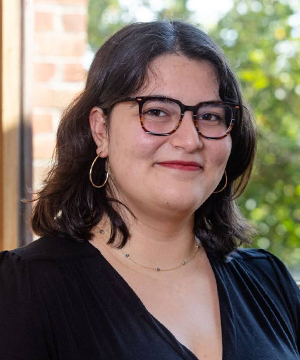
COULD YOU PLEASE DESCRIBE THE HUMAN FACTORS ENGINEERING COURSE STRUCTURE AND CONTENT?
Ekim: It’s a two-week course, but you can register for one or both weeks. It’s easiest to look at the schedule and see what material best fits your needs.
The first week serves as a crash course on human factors engineering basics and directs participants to further resources. It’s essentially a first step into the field or a refresher for those who have been out of the industry space for a while. We cover everything from fundamentals to current developments in the field. You’ll learn basic human factors theory in general, which is the core of the field. You’ll be focusing on different laws, researchers, and theories that have been around for a long time.
The second week is about up-and-coming modern issues and practical applications, such as studying more of the software involved. Week two tends to focus more on computer applications and technological systems. We also find that people will often come back later on for week two after realizing they need the hard skills.
WHAT TYPES OF HANDS-ON ACTIVITIES DOES THE COURSE OFFER?
Ekim: We do a lot of hands-on activities alongside lectures. Ten straight days of lectures can be tough, so breaking it up with hands-on activities and group projects keeps students engaged. For instance, we use a lighting meter to measure light in different parts of a room and learn how to implement that into our design. There’s also an anthropometry workshop where we learn to measure human bodies and use those numbers in our work.
There are many different seminars you can attend based on which lectures interest you the most. You can study familiar topics or explore something new with the lecturers themselves. The student-led software sessions are also wide-ranging. We have software that teaches you how to model humans in different environments, including biomechanics assessments.
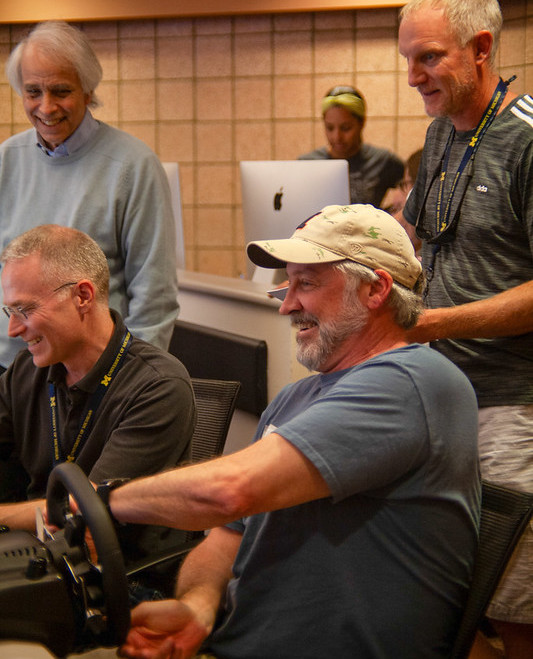
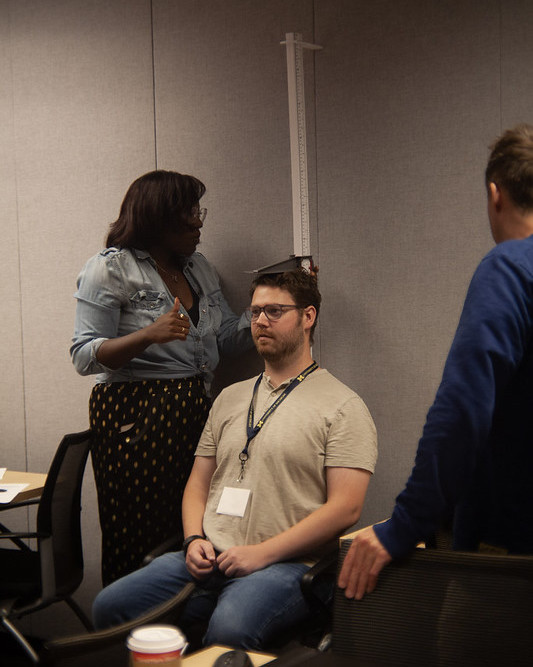
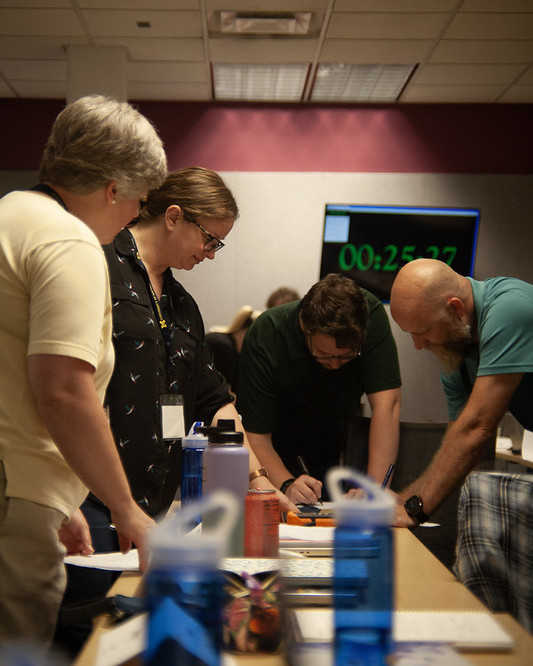
CAN YOU DESCRIBE THE EDUCATIONAL TOURS AVAILABLE FOR COURSE PARTICIPANTS?
Ekim: We have one tour at the University of Michigan Industrial and Operations Engineering building, which also includes visiting the Human Factors Engineering and Ergonomics Laboratory with PhD students. The human factors lab tour is entirely student-run. Each PhD student showcases their research and tools at different stations, demonstrating the use of VR headsets, muscle sensors, and more. It is an open tour so participants can explore stations at their own pace.
The bigger tour we conduct is through the University of Michigan Research Transportation Institute (UMTRI). We guide everyone through the whole building and explain current projects in development, our different technologies and tools, and what resources the space can offer.
HOW ARE REAL-WORLD EXAMPLES INCORPORATED INTO THE COURSE CURRICULUM?
Ekim: The instructors try to use their own research, videos, and experiments during class as much as possible. They walk students through their thought processes and give real-world examples at the same time to help teach the material.
I personally work on research with people who have Parkinson’s, and I added a little bit of that into some of my software lessons. We make a point of using real-world examples from our research at the beginning or end of the session so people can see what it would be like to use everything in the real world.
CAN YOU TELL ME MORE ABOUT THE DIVERSITY OF INSTRUCTORS AND THEIR TEACHING STYLES?
Ekim: Our group of instructors definitely inspired me to keep working in human factors engineering. They’re professionals at the top of their field and some of the best instructors in terms of how they teach. Despite watching the class multiple times, I still learn something new every single year.
We have a good balance of instructors with industry and academic backgrounds, which really helps participants relate to the material. They’re all very different. Some instructors are very theoretical and get very big in their ideas and numbers. Others prefer to provide just the bare basics and discuss their work in a casual manner. You’ll definitely get a wide variety of teaching.
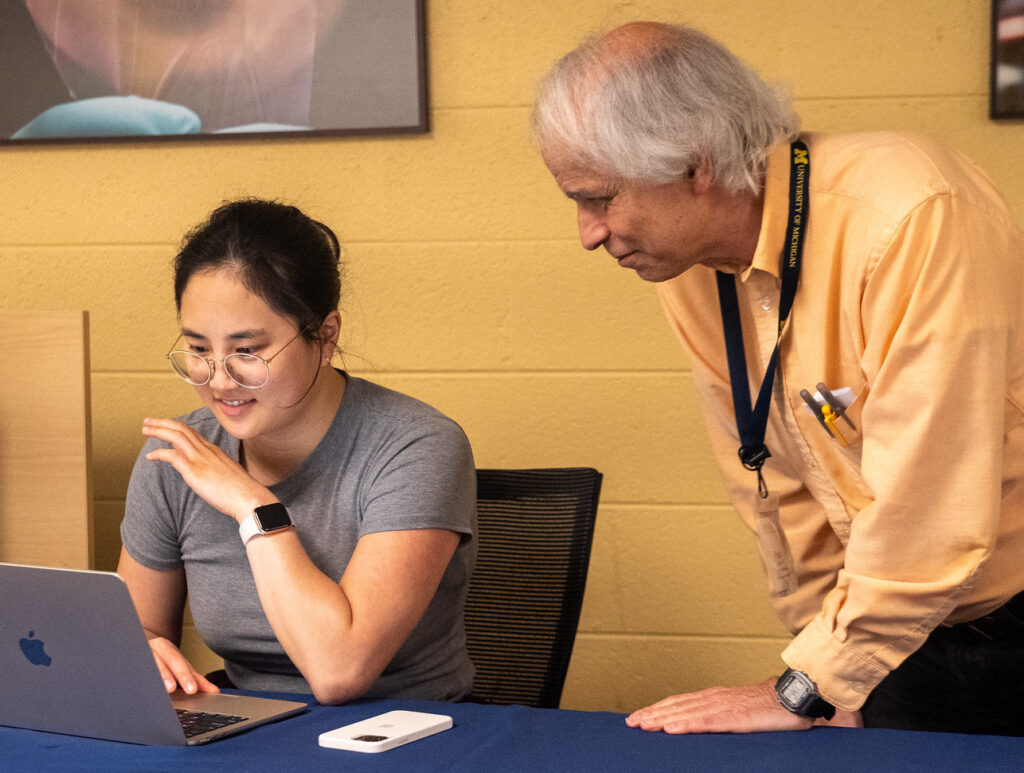
WHAT’S THE MOST IMPORTANT TAKEWAY STUDENTS GAIN FROM THIS COURSE?
Ekim: I think people come to understand that human factors engineering is a lot more than it seems. There’s a lot going on in the field, the research, the industry, and the work being done. And it’s all moving really fast, so you have to learn to keep up.
Another takeaway is learning where to find more information. We can’t give you everything you need in only two weeks for your whole career. But we’ll teach you where to look for resources, names of researchers, and general guides to keep learning.
WHAT MAKES THIS COURSE UNIQUE COMPARED TO SIMILAR PROGRAMS?
Ekim: I think what makes the course unique is how much we cover and the variety of instructors we bring in. As I mentioned, we have all of these amazing lectures. But each theme of the day is very different from the one before. It shows how big this field is, how interdisciplinary it is, and how all the professors and people who work in it have very different backgrounds. This course shows that human factors engineering isn’t just one thing. It’s a lot of things that work together and help people design things in certain ways.
WHAT ADVICE WOULD YOU GIVE TO SOMEONE INTERESTED IN TAKING THIS COURSE?
Ekim: Get ready to learn! It’s a big course, but something will always fascinate you every day. So come with an open mind. Don’t be afraid to ask questions. Don’t be afraid to talk to the instructors.
Another big thing about this course is that you won’t understand everything the same day you learn it. You might come to understand a lesson months later. So, just let things sit and marinate. You can even reach out months after the course to ask questions. We’re always happy to help.
Also, remember to socialize and get to know everybody in the course. Try to build as many connections as possible. I still run into people at conferences who remember me from when I taught in the course. You’ll have the opportunity to build a community of people from your year and even years beyond.
